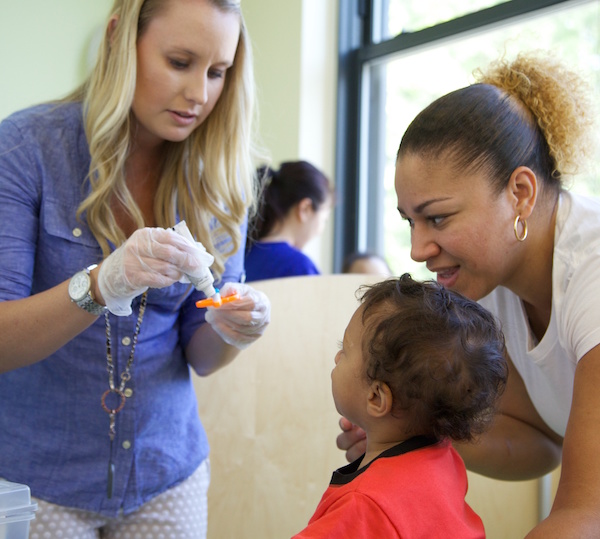 Oral health literacy is more than a person’s ability to read. It is the degree to which a person is able to get, evaluate, understand, and use oral health information and services to make good decisions about health. It is estimated that only 1 in 10 adults in the United States can fully understand written material on health. People with low health literacy are also more likely to have low oral health literacy.
Oral health literacy is more than a person’s ability to read. It is the degree to which a person is able to get, evaluate, understand, and use oral health information and services to make good decisions about health. It is estimated that only 1 in 10 adults in the United States can fully understand written material on health. People with low health literacy are also more likely to have low oral health literacy.
This Brush Up on Oral Health tip sheet focuses on oral health literacy, why it is important, and what Head Start staff can do to improve it.
Oral Health Literacy Matters
Adults with low health literacy tend to have poor health and to underuse health resources. Children whose parents have low oral health literacy tend to have poor oral health. Parents who do not understand that children’s oral health is important are less likely to take good care of their child’s teeth and take their child for dental visits. This puts children at high risk for developing tooth decay in their primary teeth and later in their permanent teeth.
Not knowing what causes oral disease and what to do to prevent or treat oral disease affects parents’ ability to take care of their own and their child’s teeth. Parents with low oral health literacy may not understand that poor feeding and eating practices can lead to tooth decay or that it is important to drink fluoridated drinking water from the tap, when it is available. Also, parents with low oral health literacy may have difficulty understanding and filling out forms or understanding treatment options or education provided by the dental office staff.
Strategies to Improve Oral Health Literacy in Head Start

Head Start staff can help improve oral health literacy in many ways, for example, by:
- Look for and deliver oral health information that is easy to understand. Think about the following questions when preparing or delivering oral health information to parents:
- Does the information consider the culture, values, attitudes, practices, and languages of the parents?
- What information do the parents need to know about oral health, and how will they use it?
- Are the messages simple? Do they use plain language and pictures? Do the messages focus on simple actions parents can take to improve oral health?
- Speak clearly and listen carefully. When sharing oral health information, use the following strategies to help parents understand the oral health message(s):
- Ask open-ended questions to gather information about oral health issues faced by parents.
- Use a medically trained interpreter to communicate clearly with parents in their primary language. Have the translator use words and examples to make the information appropriate to their primary language and culture.
- Check for understanding by asking the parents to restate in their own words the oral health messages shared with them or have parents show what was taught (for example, how much fluoride toothpaste to put on their child’s toothbrush).
- Build parents’ knowledge to improve their ability to make good oral health decisions. Many times what parents learned about health while they were in school is no longer correct. Use the following strategies to help parents become informed health consumers:
- Share materials, such as the Healthy Habits for Happy Smiles parent handouts, that provide accurate and simple tips on oral health in English and Spanish.
- Identify or develop new methods for finding and sharing oral health information that is appropriate for parents. These resources could include smartphone apps, videos, games, text messages, or tweets.
Download a PDF version to print and share.
Read more:
Resource Type: Article
National Centers: Health, Behavioral Health, and Safety
Audience: Teachers and Caregivers
Series: Brush Up on Oral Health (BUOH)
Last Updated: April 25, 2023
